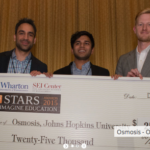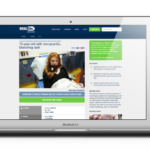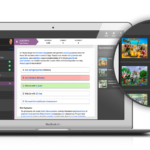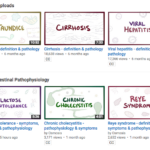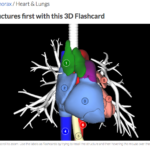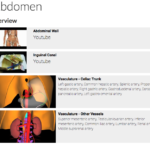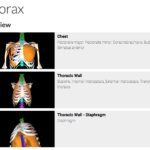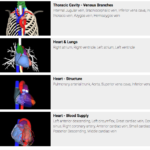Osmosis Adaptive Learning Tool for Medical School
A study tool built for tomorrow’s doctors, by today’s doctors.
Two Johns Hopkins medical students, Shiv Gaglani and Ryan Haynes, found themselves in a frustrating situation. They needed a way to make their learning stick. Their response is revolutionizing the way students study.
Falling back on their previous degrees in neuroscience and computer science, Shiv and Ryan created an app to manage medical school. Osmosis was born.
Ever wish you could learn by osmosis? Now you can! Our team of students, professors, clinicians, and neuroscientists have created a revolutionary learning platform called Osmosis. Osmosis analyzes your class schedule, notes, and lecture slides and recommends a personalized set of memory anchors, questions, flash cards and other resources that will help you learn faster and remember more, so that you can succeed in class, ace your exams and ultimately help your patients. For example: Say you have a lecture on beta blockers today Osmosis will recommend a mnemonic about the mechanism of action, a video of a patient who has arrhythmia, and high-yield flashcards for your class and board exams. The next day Osmosis will send a question about the topic directly to your phone. It’s like knowledge is actually diffusing into your brain.
Used by tens of thousands of students, Osmosis is hands down the most advanced and effective learning platform available. In the words of one clinician, Osmosis will forever change how we teach and learn medicine.
Has it been effective? Students are seeing much greater learning retention rates and they’re scoring higher on tests. Over 42,000 students from a 194 countries and 300 institutions are using the app. Osmosis took first place in University of Pennsylvania’s Reimagine Education Competition. That has drawn a lot of attention and funding. In fact, the medical team from Khan Academy including Dr. Rishi Desai has joined Osmosis. Not only is Osmosis expanding medical education but they’re applying their technology across other disciplines.
Taking first place overall in the 2015 University of Pennsylvania, Wharton School of Business “Reimagine Education” competition, Osmosis deservedly stands out in innovation. Designed by two Johns Hopkins School of Medicine students from the same small cohort, Shiv Gaglani and Ryan Haynes, Osmosis is a web and mobile learning platform revolutionizing the way students study.
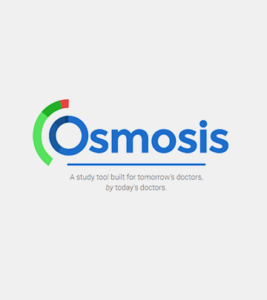 Gaglani and Haynes were quoted in the Annals of Internal Medicine saying, “We had a sobering realization during our first semester in medical school: The websites that society’s future physicians use to socialize (Facebook) and watch television (Netflix) are managed by more sophisticated algorithms than the tools we use to learn medicine. These data-driven companies have developed interfaces and algorithms to capitalize on the modern ‘attention economy,’ and they measure success through such metrics as daily active users and time on site. They analyze millions of data points on individual and group use ‘big data’ to develop personalized recommendations, among other techniques, that keep users engaged. Given our backgrounds in neuroscience and computer science, we decided to ask whether similar methods could be applied to medical education and discuss potential opportunities and barriers to these applications.”
Gaglani and Haynes were quoted in the Annals of Internal Medicine saying, “We had a sobering realization during our first semester in medical school: The websites that society’s future physicians use to socialize (Facebook) and watch television (Netflix) are managed by more sophisticated algorithms than the tools we use to learn medicine. These data-driven companies have developed interfaces and algorithms to capitalize on the modern ‘attention economy,’ and they measure success through such metrics as daily active users and time on site. They analyze millions of data points on individual and group use ‘big data’ to develop personalized recommendations, among other techniques, that keep users engaged. Given our backgrounds in neuroscience and computer science, we decided to ask whether similar methods could be applied to medical education and discuss potential opportunities and barriers to these applications.”
Adaptive Learning Platform Called Osmosis
Using evidence-based educational concepts such as questions, flashcards, and videos, images correlated with memory anchors, adaptive spaced repetition, collaborative learning and gamification, Osmosis maximizes learning and retention.
What two students first started has grown to a network of experts and tens of thousands of open education resources (OER) openly accessible free of charge. Garnering attention that has driven to crowdsourcing and partnerships, Osmosis developed an intelligent formative assessment system to drive knowledge retention specializing in medical education.
Rishi Desai, formerly the Head of Health & Medicine at Khan Academy, joined Osmosis as Chief Medical Officer and immediately focused on the development of high quality short videos; Wikipedia is already incorporating them into their medical pages. Medscape, owned by WebMD, became a collaborator enabling content readiness for the fast-growing user population.
Osmosis grew from 240 students in 2013 when Gaglani and Haynes created it at Johns Hopkins to over 5,000 within the first eight months. Gaining popularity through word of mouth, Osmosis currently serves over 40,000 students from hundreds of medical, nursing and allied health professions schools worldwide and they receive requests to join regularly.
Adaptive Learning Uses Proven Cognitive Techniques
Using proven cognitive techniques, Osmosis analyzes the students’ course materials and schedules, then generates recommendations and quizzes to prepare them for clinical practice, board exams and tests.
Faculty and students can individually and collaboratively generate local content adding it to the existing database of open educational resources and real-world cases. Peer-to-peer review processes are in place to enable community collaboration. A student can post a question to be answered, reviewed and voted upon by thousands of students and faculty. All content is tied to relevant background and detailed information.
For example, just before the student attends class for the day, the platform pushes an exercise to them to prepare them for class. It could be a case study with a patient video or other pertinent content. The student then attends the scheduled class lecture and immediately following a pertinent quiz is pushed to their device so they can self-assess their knowledge retention. If they find weak areas, they can click any of the links to resources, mnemonic devices, flashcards and the like to strengthen their knowledge.
Analytic Dashboard with Performance Tracking
Analytic dashboards for the instructor and student enable class and personal performance tracking. Instructors can identify at-risk students and knowledge gaps for individuals and entire cohorts.
As knowledge is “diffused”–hence “Osmosis”–the student can visibly see on their dashboard what content they have and have not consumed and which would be beneficial at the moment. Gamified by color, from gray to dark purple the dashboard designates how much progress the student is making in growing their knowledge. With assessments, the student can also see what knowledge is retained (designated in green) and what needs to be revisited (designated in red).
Journalist Susan Scutti aptly described Osmosis saying, “Osmosis is the app that manages medical school for you.” Others have called Osmosis the “personal trainer” or “pocket Aristotle” for medical students.
The future looks bright for Osmosis. Implementation in medical schools will only grow from here but there is much more on the horizon. Co-founders, Gaglani and Hynes intend to develop Osmosis for a broader market including a wider range of topics beyond medical as well as for use in K-12.
Supplemental Links
- A Few Short Videos to Help You Get Started
- The Doctors Channel Interview
- Clinical Video (Partner Content)
- Medscape Content
- Pathophysiology (Video Content)
- 3D Anataomy (Osmosis Content)
- Picmonic (Partner Content)

